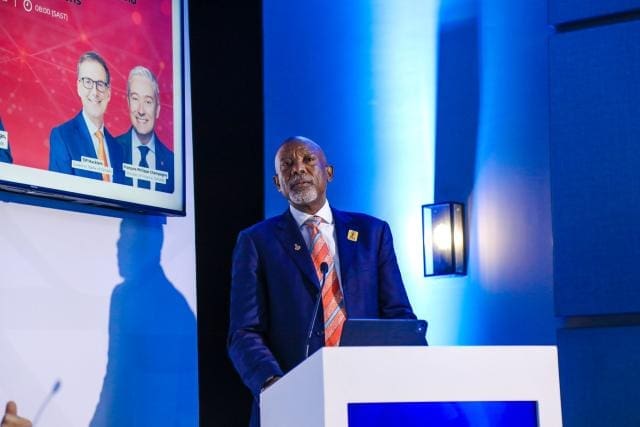With the surge in natural disasters in the last decade, the Governor of the South African Reserve Bank (SARB), Lesetja Kganyago, has called on leaders in the Group of Twenty (G20) to bridge the gap in the natural catastrophe insurance protection gap.
The gap refers to the difference between total economic losses and insured losses caused by natural catastrophe (NatCat) events.
“Addressing the Natural Catastrophe Insurance protection gap is both urgent and consequential for both developed and emerging market economies.
“The frequency and intensity of natural disasters are increasing, causing significant damage to property and infrastructure, impacting lives and livelihoods, and resulting in tremendous loss of life. The risks are global, but the burden is deeply unequal,” Kganyago explained.
The Governor was speaking during the G20 Finance Ministers and Central Bank Governors (FMCBG) meetings in Durban on Thursday.
He was addressing senior leaders from governments, central banks and supervisors, the private sector, and international organisations at a side event that discussed strategies and solutions for addressing the widening insurance protection gap.
NatCat protection gaps present a global challenge, affecting both advanced and emerging market and developing economies (EMDEs), and therefore require global responses.
In recent decades, damages and losses from NatCat events have surged due to the growing frequency and severity of extreme weather events, exacerbated by climate change.
While insurance markets play a crucial role in mitigating the financial impacts stemming from these damages, their ability to offer adequate coverage is increasingly being challenged, leading to a widening insurance protection gap against NatCat events.
“In many emerging and developing economies, the costs of these disasters are magnified by limited financial and significant lack of insurance protection.
“Globally, it is estimated that over half of natural disaster losses remain uninsured. In EMDEs, that figure often exceeds 70%. South Africa, for example, is estimated at 71% and India at around 91%. This leaves households, businesses and governments dangerously exposed, compounding economic shock and slowing development for years or even decades,” the Governor said.
Emerging market and developing economies face disproportionately higher protection gaps due to low insurance penetration, affordability challenges, underdeveloped insurance markets, and insufficient access to risk models and data.
Significant insurance protection gaps are also observed in advanced economies, including Europe. In recent years, promoting insurance protection against NatCat events has become an important priority for policymakers and the international community.
“From a central banking perspective and financial stability perspective, this is not a peripheral issue but a core issue. Uninsured losses from natural disasters can undermine economic stability, threaten the solvency of financial institutions and disrupt credit flows.
“Moreover, when governments must step in with emergency funds or debt finance reconstruction, it places additional strain on already limited fiscal space,” he said.
For central banks, policymakers and supervisors, bridging this protection gap is part of building macro financial resilience, the Governor said.
Call for improved mechanisms
“It calls for stronger risk sharing mechanisms, improved data and modelling of climate related risks and innovative insurance solutions such as parametric instruments, catastrophe bonds and regional risk pools.
“More importantly, it requires a coordinated and collaborative effort across governments, insurance supervisors, the private sector, international organisations, multilateral development institutions and local communities to embed financial resilience into our climate and development strategies,” Kganyago said.
He encouraged the global leaders to recognise that resilience is not built in the aftermath of disasters but in the deliberate and proactive planning and actions before they occur.
“Insurance is not a luxury; it is a foundational and critical tool for sustainable development. Let’s think boldly about how we can address this protection gap beyond innovative products to include appropriate policies and regulations that are inclusive, accessible and tailored to jurisdictional instances, especially considering the realities of EMDEs,” the Governor said.
The G20 South African Presidency, in collaboration with the International Association of Insurance Supervisors (IAIS) and the World Bank Group (WBG), hosted this side event during the G20 Finance Ministers and Central Bank Governors (FMCBG) meetings.
The event focused on improving financial resilience and enhancing broader disaster risk mitigation strategies by identifying and addressing insurance protection gaps.
Input paper
South Africa assumed the G20 Presidency on 1 December 2024 until 30 November 2025 under the theme: “Solidarity, Equality and Sustainability”.
This initiative forms part of the G20 Sustainable Finance Working Group (SFWG) priority of scaling up finance for adaptation and just transitions, as discussed in an IAIS-WBG input paper, which will be published next week.
The paper serves as a ‘guide for action’ to help jurisdictions narrow NatCat insurance protection gaps. The paper outlines practical and implementable actions that governments, supervisors, and the insurance industry can take, with a particular focus on EMDEs.
From 21 July 2025, the input paper can be accessed on the G20 SFWG website: https://g20sfwg.org/document-repository/.
– SAnews.gov.za



